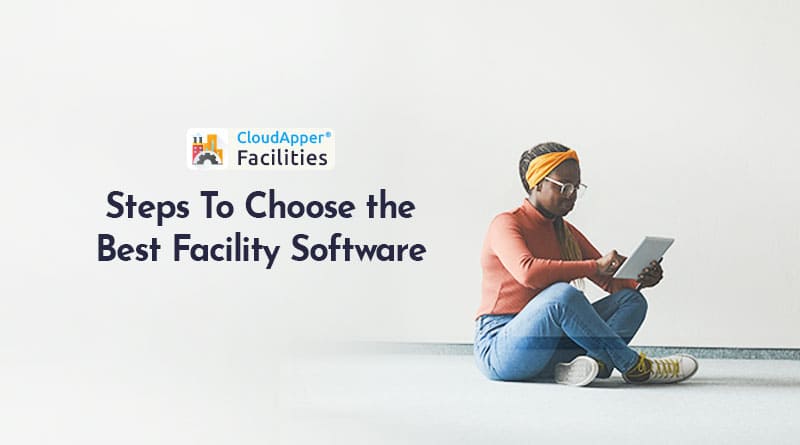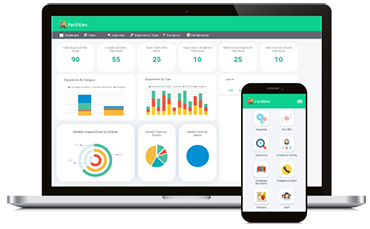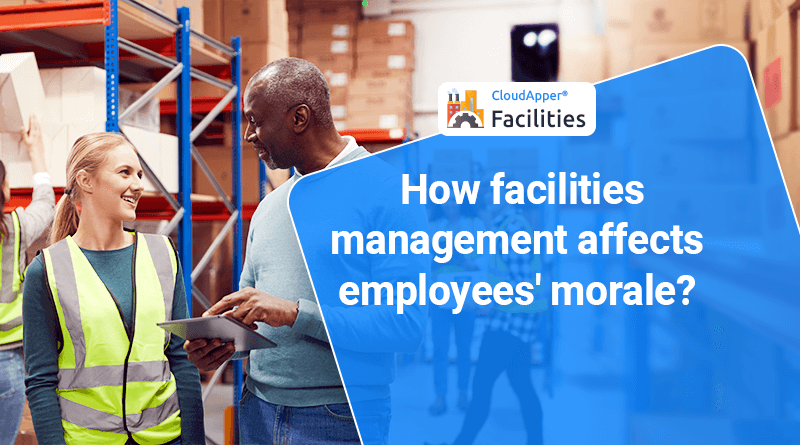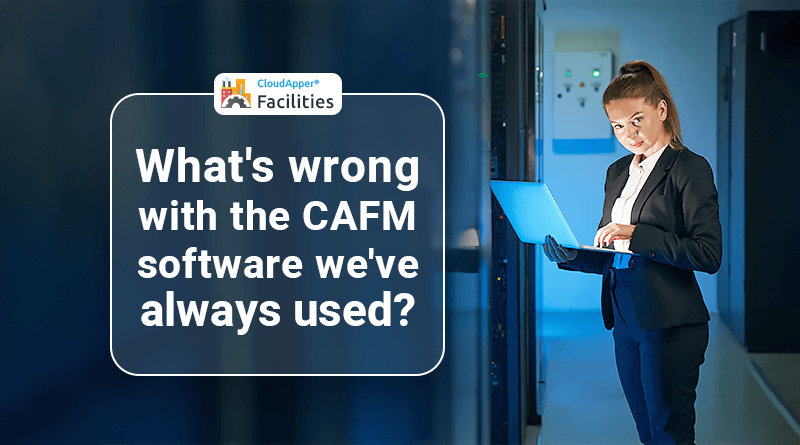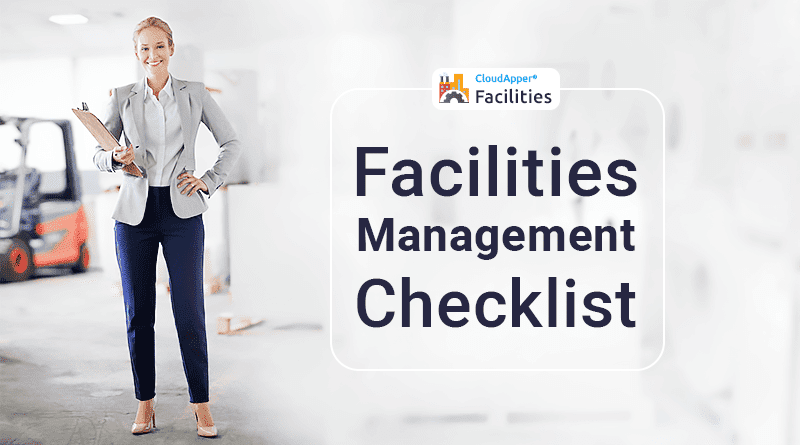Table of Contents
If you are new to the digital facility management world, you might get the feeling of drowning in alphabet soup if you are asked to choose the best facility software. But first of all, things can get really messed up, if you cant understand the distinction between IWMS, CAFM, CMMS, and EAM. It’s like trying to get packed for a journey without knowing where to go. The trickiest down jacket performance will not do you very well in Aruba.
Another issue with searching the internet for facility management software as your first step is that you are likely unfamiliar with the state of the art, and it’s easy to get fooled by nice interfaces that don’t perform much of what you need. Despite the fact that this is improving, facilities software is rarely built by facilities personnel. And because most facility personnel have never worked with a genuinely robust CMMS, CAFM, or IWMS, the blind are guiding the blind.
You’re probably frustrated with your current circumstance and trying to find out what to do about it if you’re reading this. You’ve been relying on spreadsheets for a long time, but they’re no longer sufficient. You’re bored of just keeping track of the fires you’re putting out because you’re working in a homemade offshoot of what IT utilizes for their work orders.
Alternatively, you may have legit facilities management software in place, but it is causing more problems than it is solving. Whatever the cause, facility managers will need to select the finest facility management software system for their firm through a multi-step process. And knowing what problem you’re trying to tackle is crucial to selecting the correct technology.
Step 1: Conduct a needs assessment.
The first step is to assess why your current situation is failing. Make a list of your complaints about the current situation. Is it possible that the existing system doesn’t provide specific capabilities because it wasn’t built to, or is it possible that the capacity exists but is misconfigured?
From a reporting aspect, what kind of intel do I require? This is one way of asking oneself the question. Determine the types of work that must be tracked, such as work orders, space management, and capital projects. Are you attempting to centralize all of your facilities’ management data?
Do you currently have a collection of other tools that you enjoy and use, but you need to add some new feature, which may need to find something that works with what you already have? People frequently say, “We need something new since this isn’t working,” but they don’t think through why it isn’t working and what it would take to make it work.
Make sure to include stakeholders outside of the facilities department, such as real estate development, HR, or purchasing, when assessing needs. The interconnections between departments will be revealed as a result of these discussions. Determine what types of information must be exchanged, the present method for sharing that information across departments, and how those processes could be enhanced with a new software system.
Prioritize between needs and wants, and order your demands from essential to optional, because no software system will be a panacea. There is no single system that can meet all of your requirements.
When you’re looking for a system that may potentially solve all of your problems, you might miss out on software that would be ideal for you since you’re getting five steps ahead. Don’t buy software that will go much beyond your requirements because it will be difficult to implement and may take years to get to where you need to be.
Step 2: Research all options.
Rather than looking for a miraculous jack-of-all-trades software, search for software that can interact with other software via open APIs. Examine how well they can communicate and receive data from other systems,” he says. That will open up capability in the future if demands change or new systems become available with which to interoperate.
Also, double-check that your data may be exported. Include it right up front in your RFP specifications. You should be able to extract the data at any moment because it is your property. You’ll be able to import your data history into the new system if you need to transfer to different software in the future. Making the transition is challenging, but it is possible. If you don’t own your data, though, you won’t be able to use it.
Purchasing facilities management software is a terrific way to put your network to work. You should actually go out to your peers first because they’ve already been through it. Peers can help you avoid systems that haven’t succeeded in the past and lead you in the direction of some good bets. Plus, you may ask them any questions you want and know you’ll get an honest answer based on in-field experience.
Request customer recommendations from the manufacturer once you’ve narrowed down your list of potential vendors. Inquire about their previous clients of comparable size and function, as you want to hire a firm that has worked with organizations similar to yours. “You don’t want to be the newest guinea pig. You want someone with enough experience that you won’t have to do much work. That isn’t something that FMs have time for. They want someone they can trust to assist them to get through this with as few setbacks as possible.
Step 3: Go on a few test drives.
Getting hands-on with several demos is an excellent method to identify a good fit. Demos are popular among software companies, and you don’t need to have an RFP in place to request one. Request a live demon rather than a slide deck presentation. Inquire about how it operates in the system, how to make a work order, how to print reports, how to check the status of anything, how to set up PM work orders, how to reassign a work order, and so on.
During the demo, be cautious. It’s easy to get caught up in the amazing features and lose sight of what you really need the system to perform. Be careful of claims of compatibility that seem too good to be true, such as solutions if systems don’t connect. You must use caution in these situations. You’re unhappy with your existing program since it can’t do it, and you’re going to buy a new one that can’t do that too, but there’s a workaround? You’ll have to deal with yet another piece of software that won’t deliver what you need.
Step 4: Take your time.
Because facility management software is such a large investment, it’s critical to take your time and choose the best facility software. If it doesn’t work out, you won’t be able to alter your mind in a year or two. This will be your lifeblood for a long time, so make sure it’s a decent system.
Not only will it take time to make a wise purchasing selection, but it will also take time for your employees to get comfortable and proficient with any new software, possibly a couple of years. Switching to a new system too frequently can be disheartening for a facilities team, so factor in your team’s comments as you balance the benefits and drawbacks.
Given everything on the line, facility managers may want to hire a third party to assist them to make sense of it all, especially if this is their first time installing a facilities management software solution at their company. A consultant could be hired to guide you through the entire process or just for the needs analysis phase.
A consultant can help keep things real in addition to relieving the pressure of figuring out all the possibilities. This person can play devil’s advocate and question if you truly need this program.
Choose the best facility software to offer clarity and efficiency to facility procedures is an absolute must in today’s world, either you seek advice from a third party or handle the process in-house. There’s also no need to remake the wheel or battle with a DIY solution. There are a plethora of off-the-shelf choices. Simply maintain your composure and get on with your shopping.
What is CloudApper AI Platform?
CloudApper AI is an advanced platform that enables organizations to integrate AI into their existing enterprise systems effortlessly, without the need for technical expertise, costly development, or upgrading the underlying infrastructure. By transforming legacy systems into AI-capable solutions, CloudApper allows companies to harness the power of Generative AI quickly and efficiently. This approach has been successfully implemented with leading systems like UKG, Workday, Oracle, Paradox, Amazon AWS Bedrock and can be applied across various industries, helping businesses enhance productivity, automate processes, and gain deeper insights without the usual complexities. With CloudApper AI, you can start experiencing the transformative benefits of AI today. Learn More
